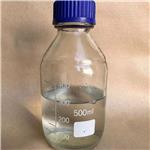Chemical Properties
Colorless liquid.Soluble in water and alcohol.
Uses
manufacture of quinacrine and other antimalarials having the same basic side chain.
Production Methods
The diamine is produced by a conventional method, for example, by aminating 1-diethylaminopentan- 4-one under hydrogenation conditions, by hydrogenating the oxime, or by aminating 1-diethylaminopentan-4-ol.
General Description
A colorless liquid. Toxic by ingestion, inhalation and skin absorption. Irritating to skin and eyes. Used to make other chemicals.
Reactivity Profile
2-Amino-5-diethylaminopentane neutralizes acids in exothermic reactions to form salts plus water. May be incompatible with isocyanates, halogenated organics, peroxides, phenols (acidic), epoxides, anhydrides, and acid halides. Flammable gaseous hydrogen may be generated in combination with strong reducing agents, such as hydrides.
Health Hazard
TOXIC; inhalation, ingestion or skin contact with material may cause severe injury or death. Contact with molten substance may cause severe burns to skin and eyes. Avoid any skin contact. Effects of contact or inhalation may be delayed. Fire may produce irritating, corrosive and/or toxic gases. Runoff from fire control or dilution water may be corrosive and/or toxic and cause pollution.
Fire Hazard
Combustible material: may burn but does not ignite readily. When heated, vapors may form explosive mixtures with air: indoors, outdoors and sewers explosion hazards. Contact with metals may evolve flammable hydrogen gas. Containers may explode when heated. Runoff may pollute waterways. Substance may be transported in a molten form.





